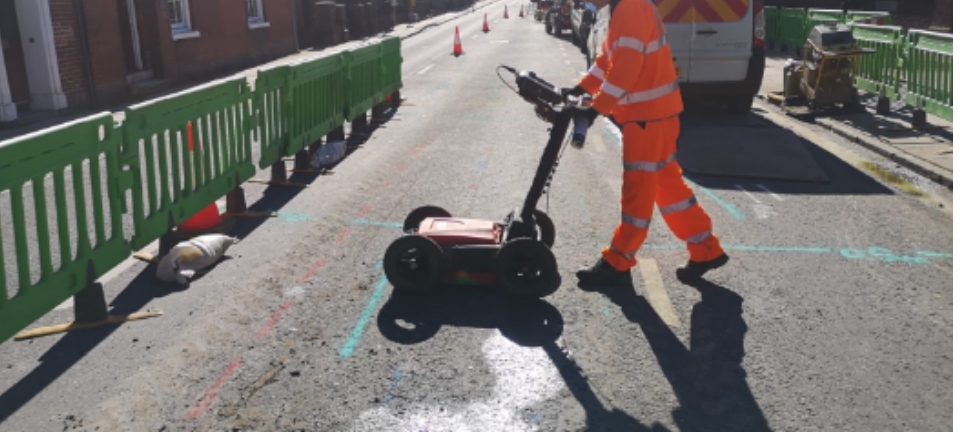Glancing Under the Surface: Ground Penetrating Radar Investigations Described
Ground Penetrating Radar, also known as GPR, has emerged as a powerful tool for non-destructive subsurface exploration. This advanced method enables professionals from various industries to peer beneath the surface and collect critical information about what lies below, all without the requirement for excavation. Recognizing what a GPR survey entails and its importance is essential for engineers, construction supervisors, archaeologists, and environmental scientists alike. Through the use of this technology, these industries can significantly enhance their project outcomes, ensuring the safety of operations and efficacy while minimizing expenses.
In this article, we will examine the numerous benefits of GPR surveys, from their role in construction and engineering projects to their applications in archaeology and environmental investigations. We'll investigate the technology behind GPR, contrasting it to traditional survey methods, and discuss common myths surrounding its use. Additionally, this detailed guide will offer insights into how to choose the right GPR survey provider, the cost considerations involved, and how GPR surveys are revolutionizing infrastructure evaluations today. Whether you're a beginner or looking to enhance your existing knowledge, this article will provide you with a deeper understanding of GPR surveys and their essential role in modern industry.

Understanding GPR Surveys along with Their Significance
Ground Penetrating Radar (GPR) investigations represent non-invasive geophysical methods used to investigate subsurface conditions. Using emitting rapid frequency radio signals into the ground and measuring the echoes, GPR is able to detect and map different underground features, including utility lines, voids, as well as geological formations. This technology remains crucial to a wide range of industries, like construction, archaeology, ecological studies, along with civil design, because it supplies important insights without the need for heavy digging.
The importance of GPR studies stems from their capacity to enhance security as well as efficiency during different initiatives. In infrastructure as well as engineering projects, identifying hidden utilities and possible risks ahead of commencing work helps avoid mishaps and costly disruptions. For historic studies, GPR enables uncover cultural items as well as sites hidden beneath the surface while preserving the site, allowing for a more considerate and thorough investigation of historic sites.
Additionally, GPR technology continues to be constantly developing, resulting in it becoming more precise along with available. As sectors acknowledge the value of conducting GPR studies, their role for environmental studies as well as geotechnical studies is evolving to be necessary. By providing detailed insights regarding subsurface conditions, GPR helps inform strategic decisions, that ultimately produces superior project results along with minimized environmental impact.
Benefits and Applications of GPR Surveys
Ground Penetrating Radar surveys offer many advantages, making them an important tool for various industries. One of the key benefits is their ability to provide non-intrusive subsurface imaging, enabling for the detection of subsurface structures such as conduits, wires, and geological formations without disturbing the ground. This leads to safer and more effective project execution, minimizing the risks linked to accidental utility strikes and decreasing the costs of remediation. Moreover, GPR technology is comparatively quick, allowing for rapid data collection and analysis, which is crucial in time-critical projects.
The applications of GPR surveys span a broad range of fields. In construction and engineering, GPR is frequently used to assess site conditions before excavation, guaranteeing compliance with local regulations and guidelines. This technology is also extremely valuable in environmental assessments, where it helps identify contaminants and stratigraphic layers. Additionally, GPR is applied in archaeological investigations to reveal buried artifacts and structures while preserving the integrity of the site, thus minimizing disturbance to historical contexts.
Another major application of GPR surveys is in the realm of structural inspection and maintenance. click for more info apply GPR to assess the condition of concrete structures, detecting separation or voids that may compromise safety. This proactive approach to infrastructure management extends the lifespan of assets and enhances safety for the public. Overall, the versatility and precision of GPR surveys make them an essential resource across different sectors, demonstrating their pivotal role in modern engineering practices.
GPR Surveys: Techniques, Reliability, and Emerging Trends
Ground Penetrating Radar (GPR) technology utilizes high-frequency electromagnetic waves to locate and map below-ground structures. you can check here is made up of a signal generator that transmits radar pulses into the ground and a receiver that collects the reflected signals. This method produces images that depict the variations in material and the presence of objects like pipes, voids, or archaeological features. As technology has advanced, GPR systems have turned more compact, user-friendly, and capable of generating higher resolution images, making them essential tools in various industries.
Precision is a primary concern in GPR surveys, as it directly impacts the trustworthiness of the data collected. Various factors can alter the accuracy of GPR results, including soil structure, moisture content, and the depth of the target. Modern GPR systems are integrated with advanced processing algorithms that enhance signal interpretation, leading to increased accuracy in locating underground services and structural irregularities. Continuous developments in software and data analysis techniques are expected to further increase the reliability of GPR surveys in precisely representing subsurface situations.
Looking ahead, the future of GPR technology is promising. With the integration of AI and data-driven learning, processing speeds and accuracy levels are set to improve. These improvements will enable more efficient interpretation of complex data sets, leading to faster decision-making in infrastructure development and environmental assessments. The growing emphasis on infrastructure resilience and sustainability will drive demand for GPR applications in assessing and maintaining structural integrity, ensuring that GPR continues to be at the forefront of modern surveying techniques.